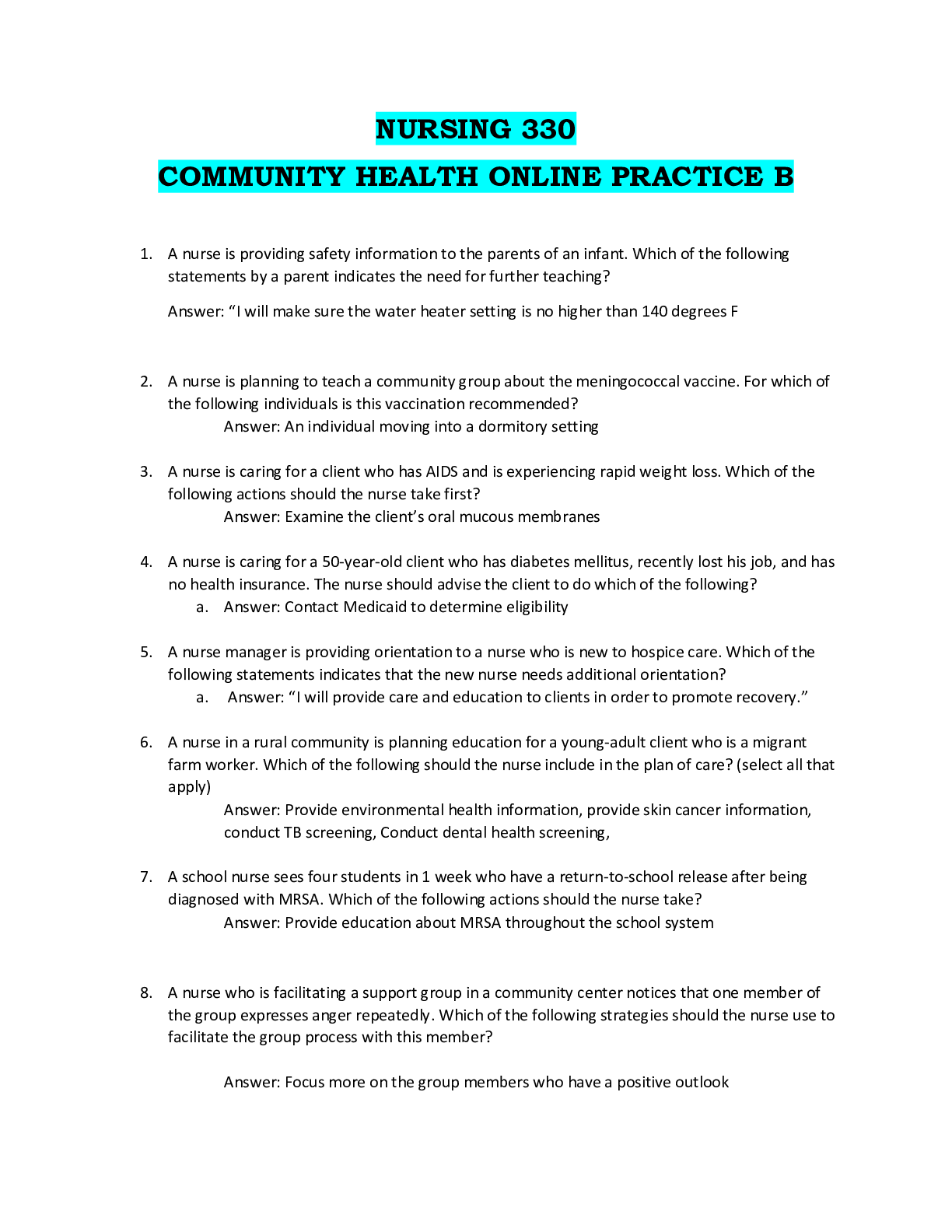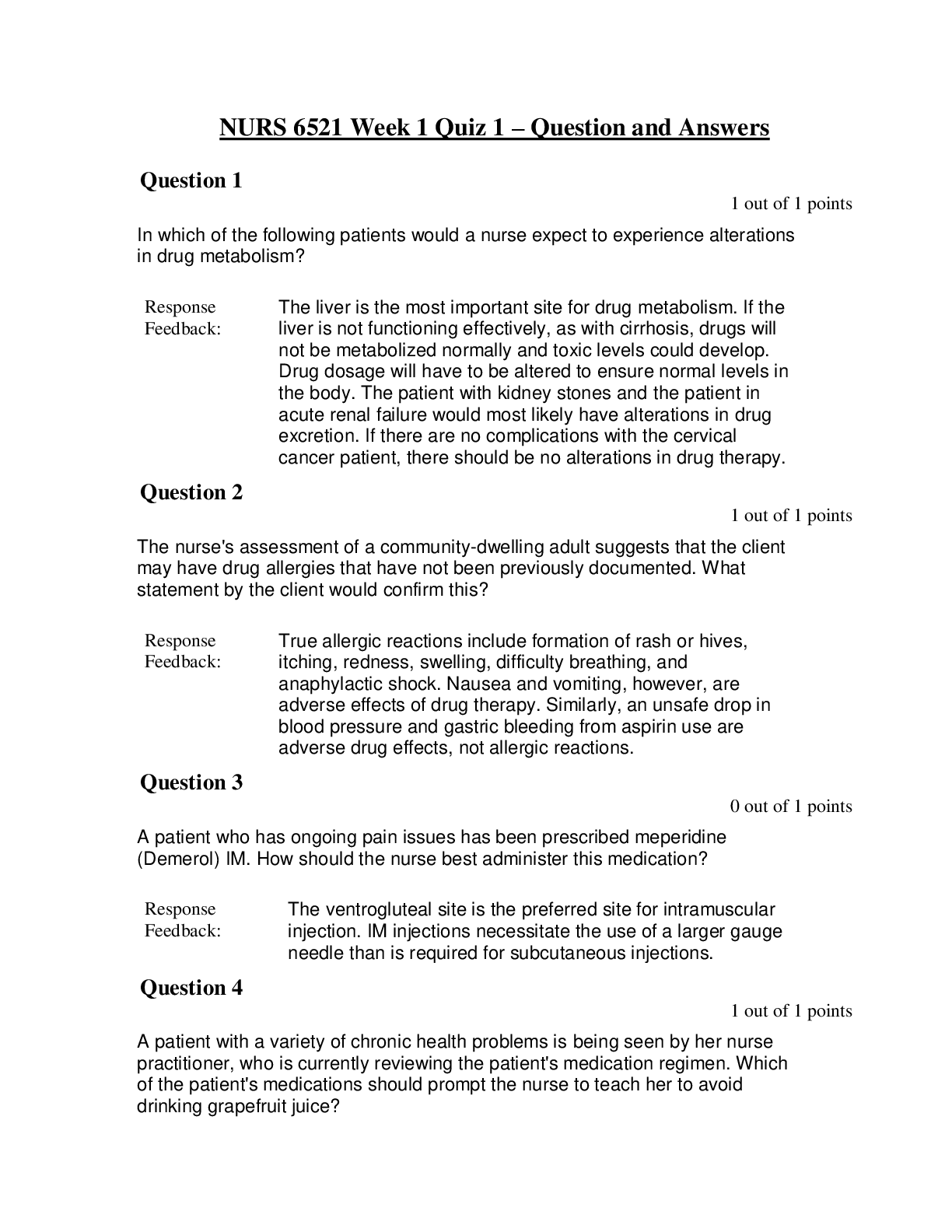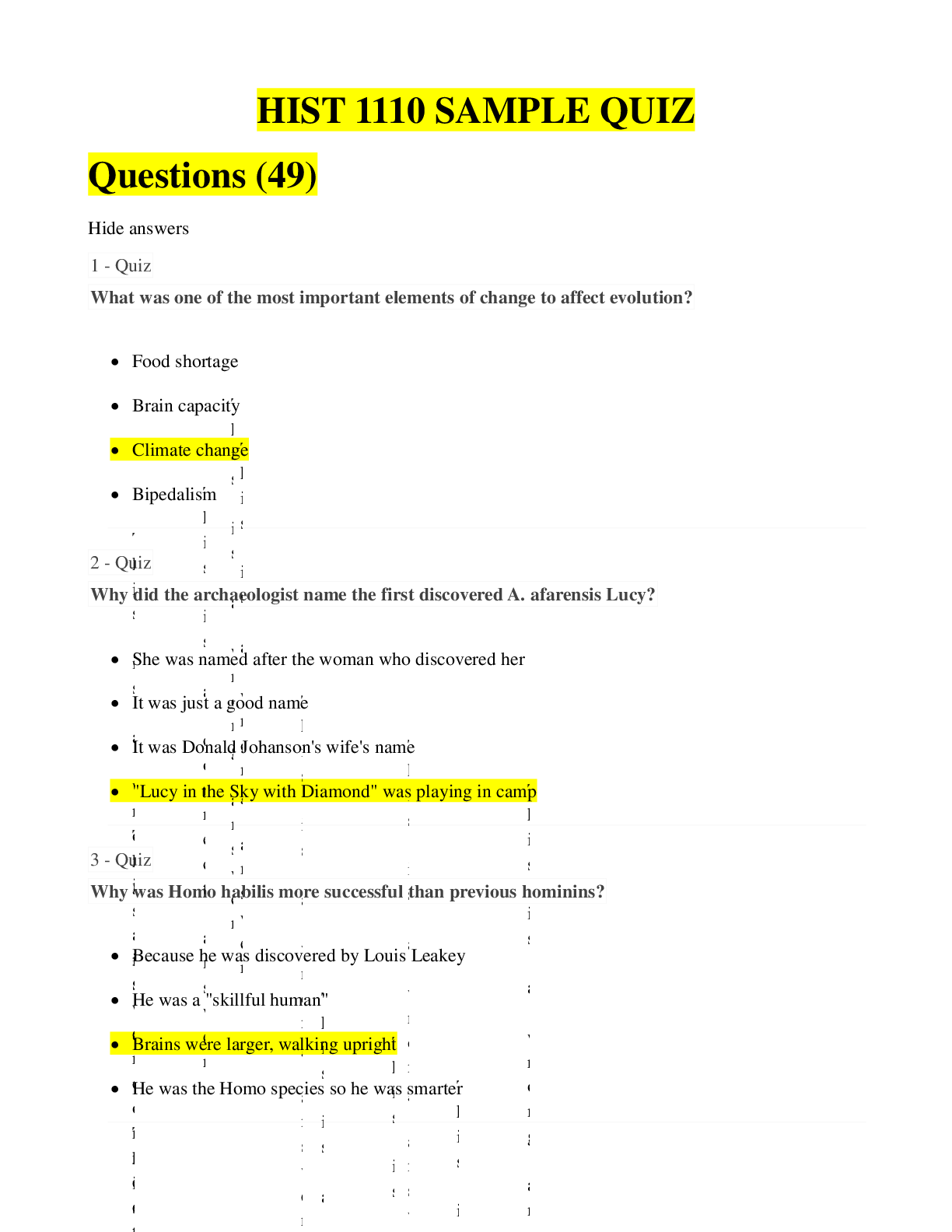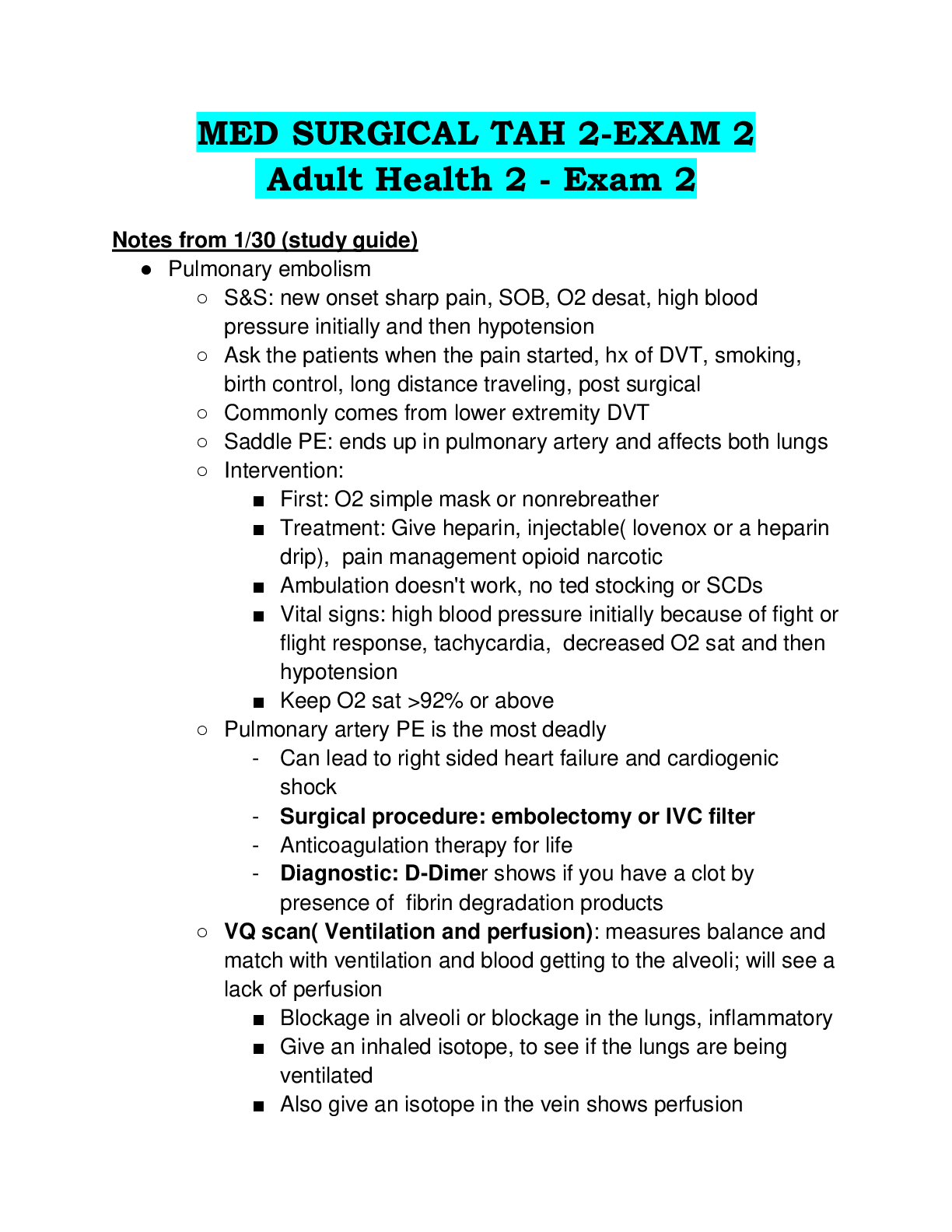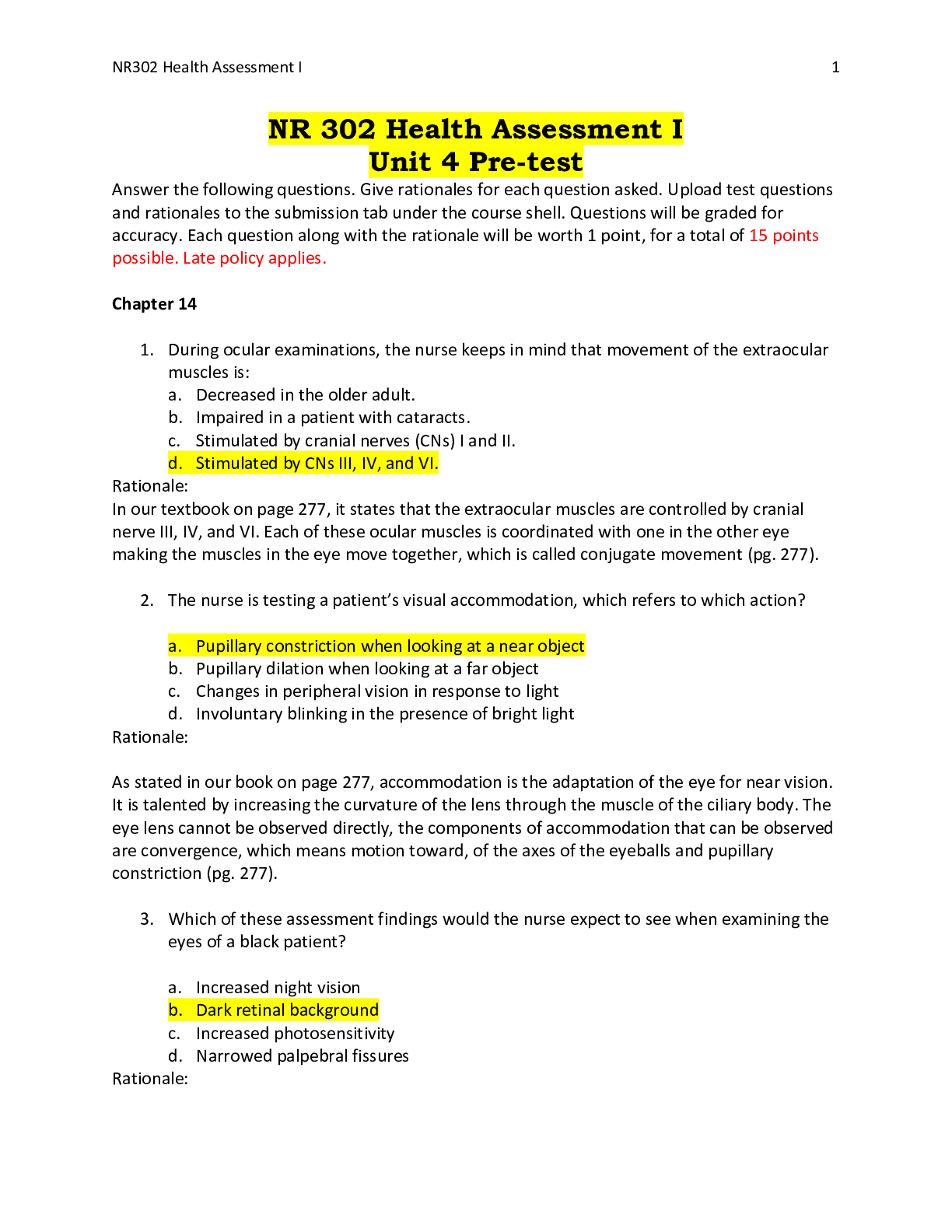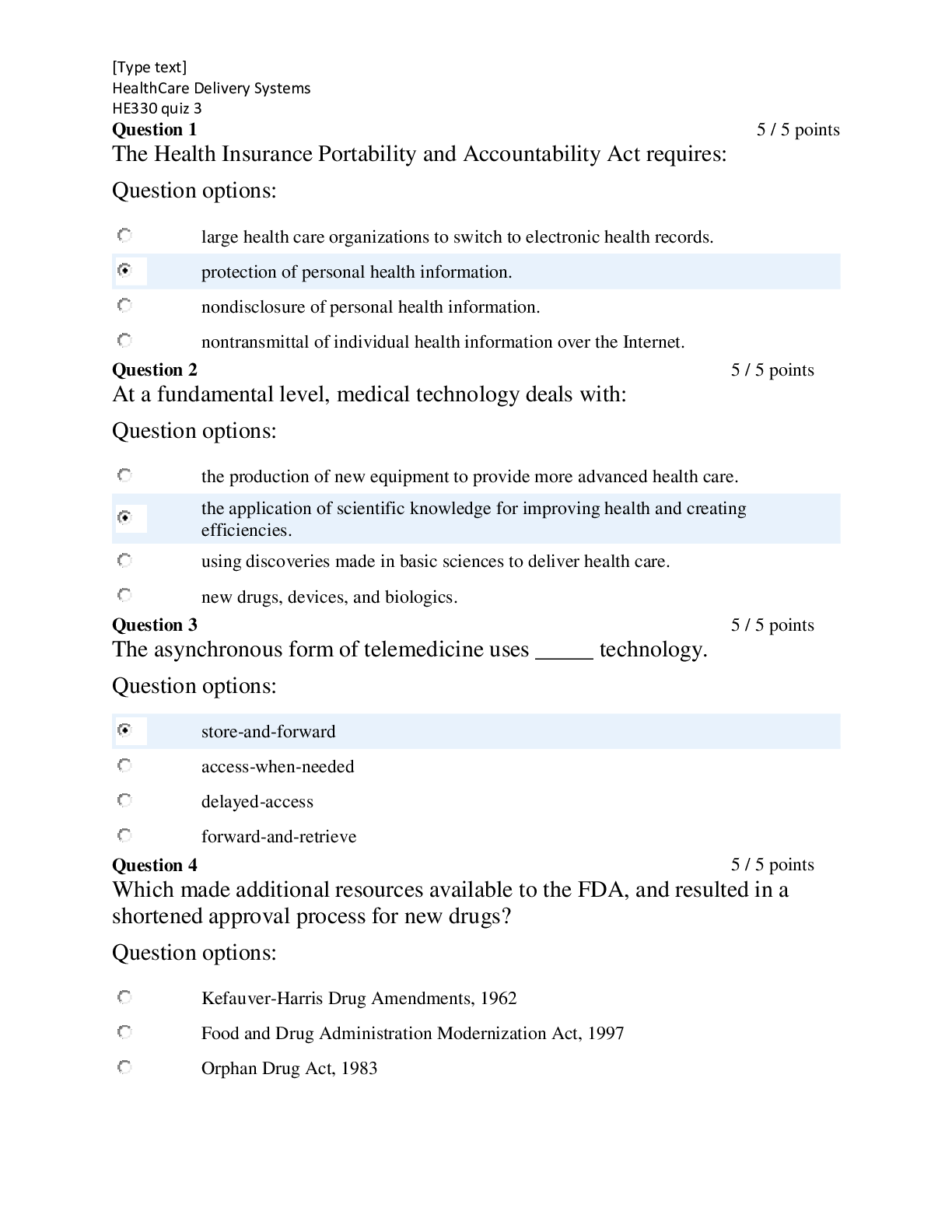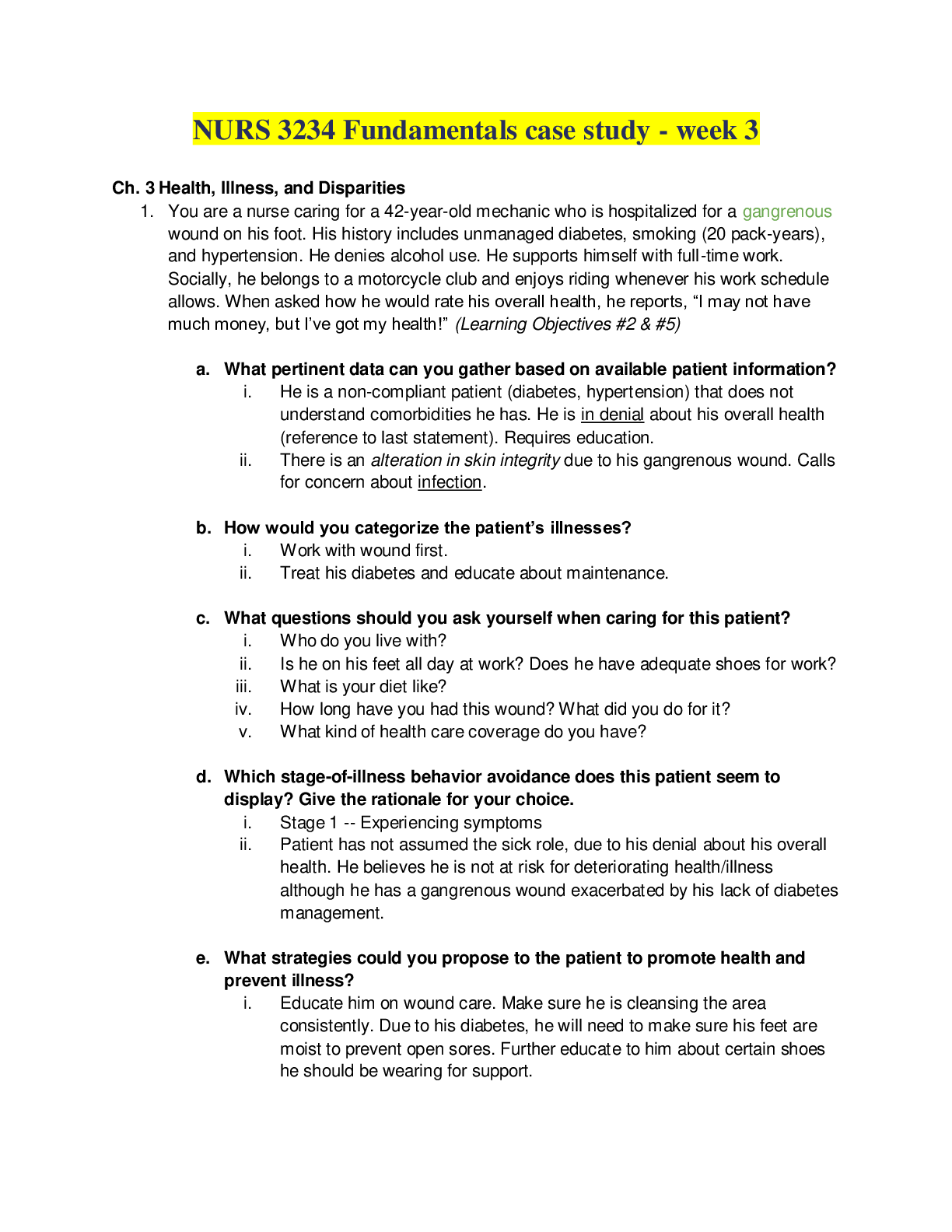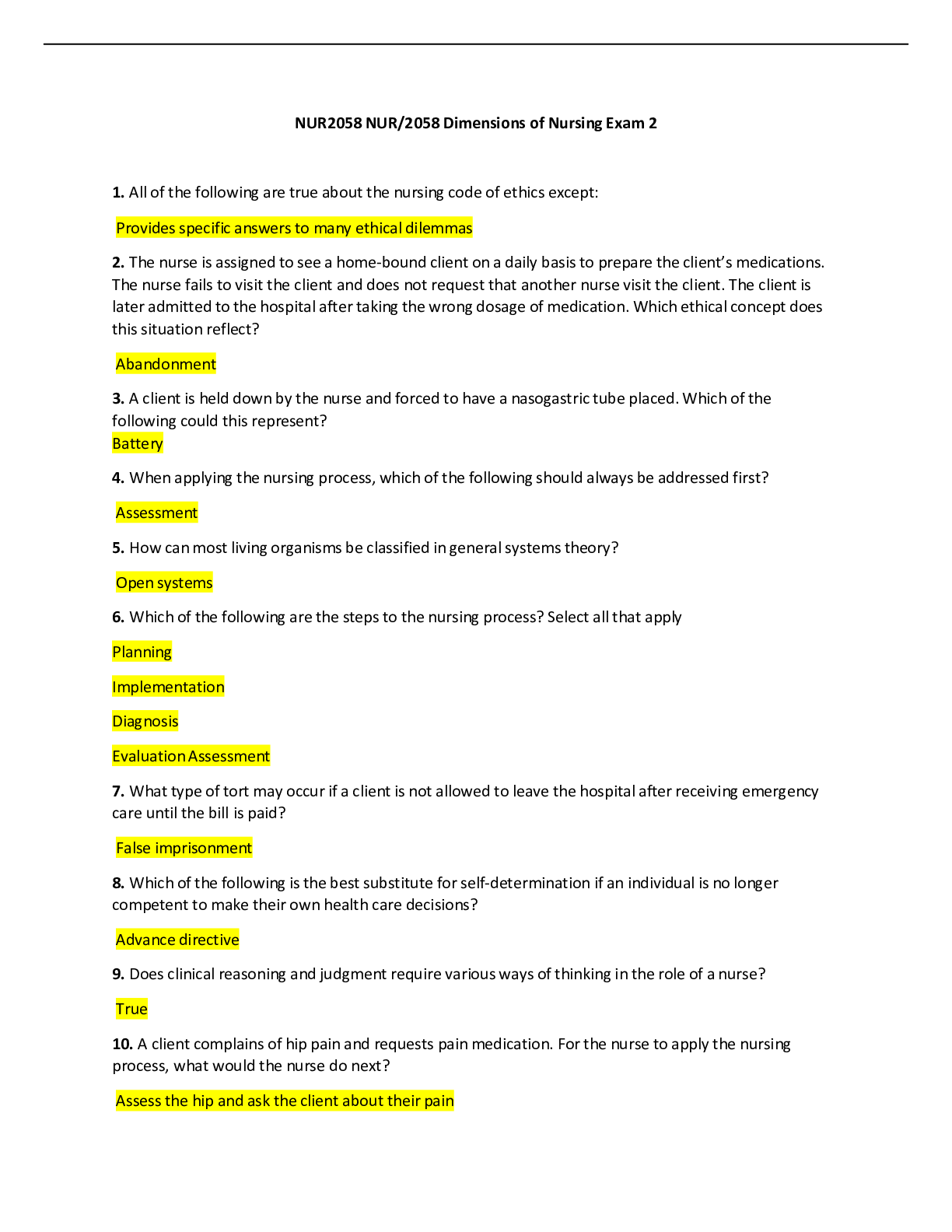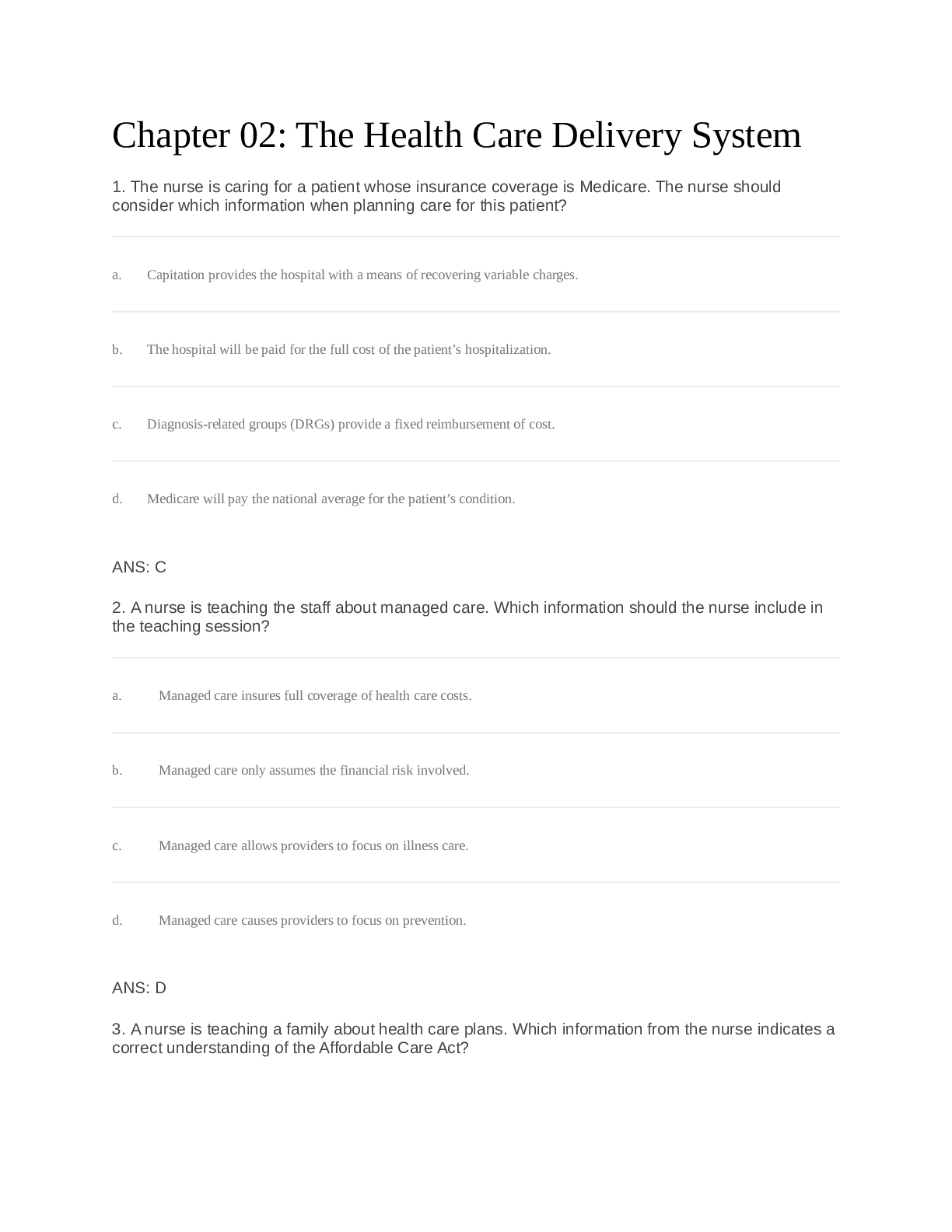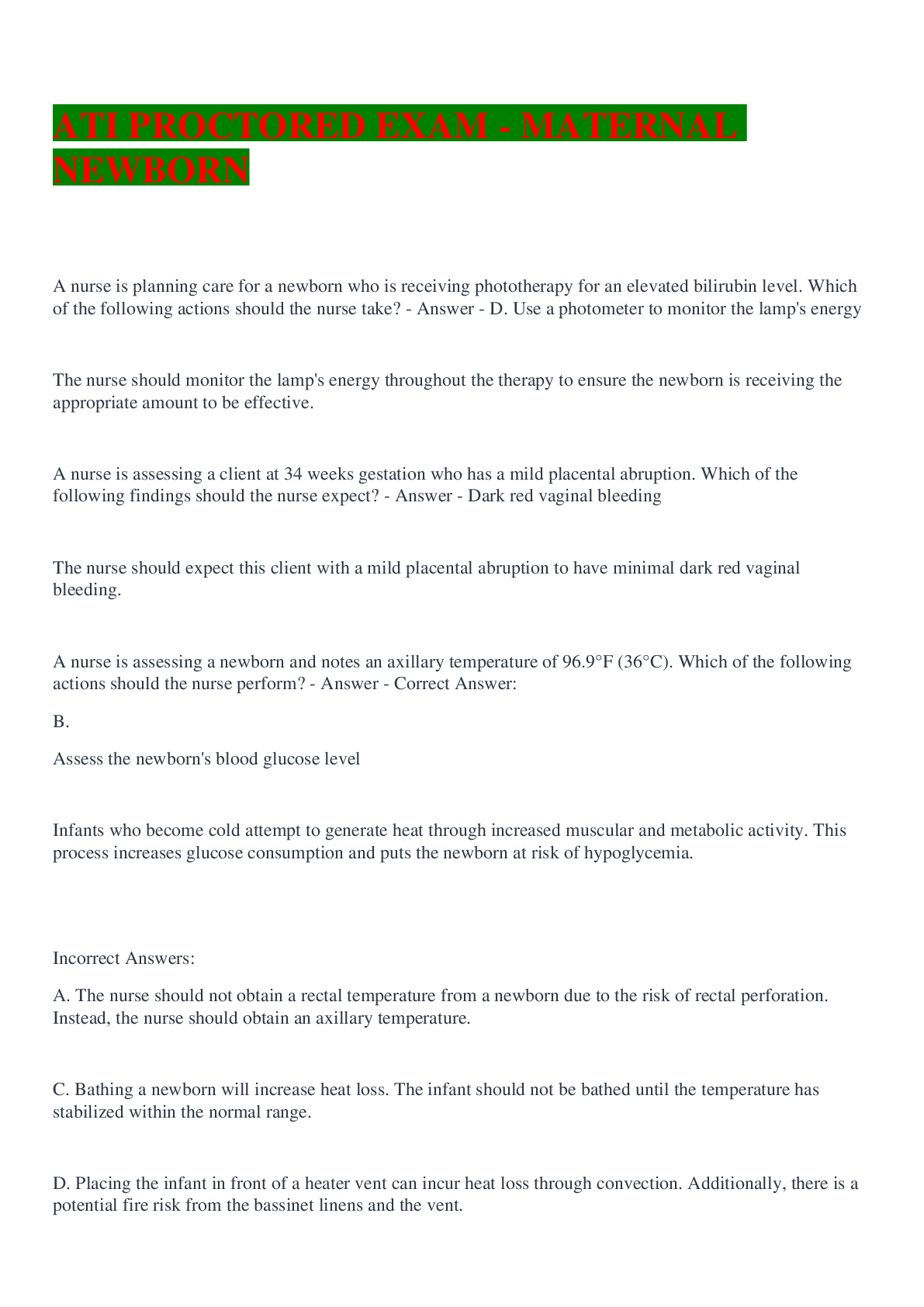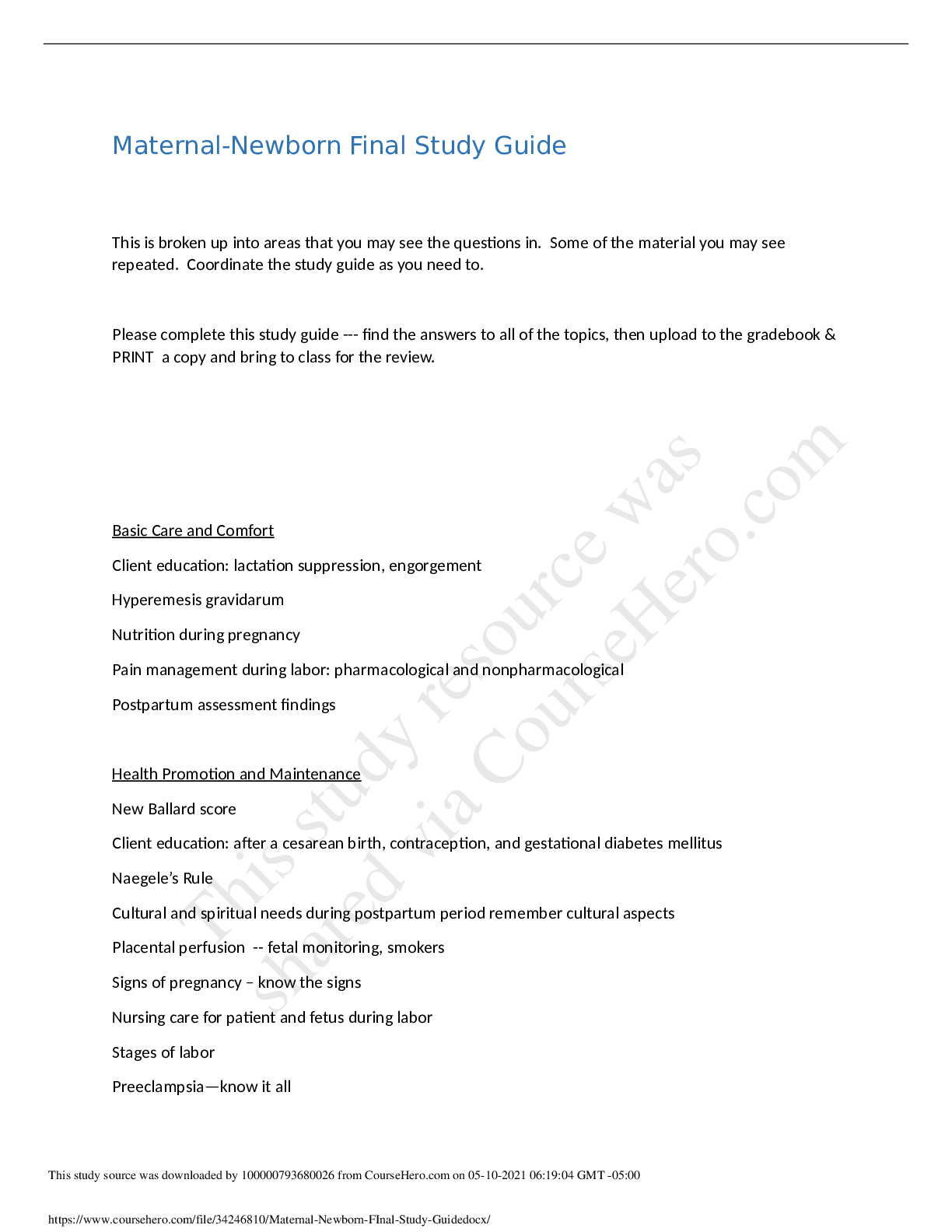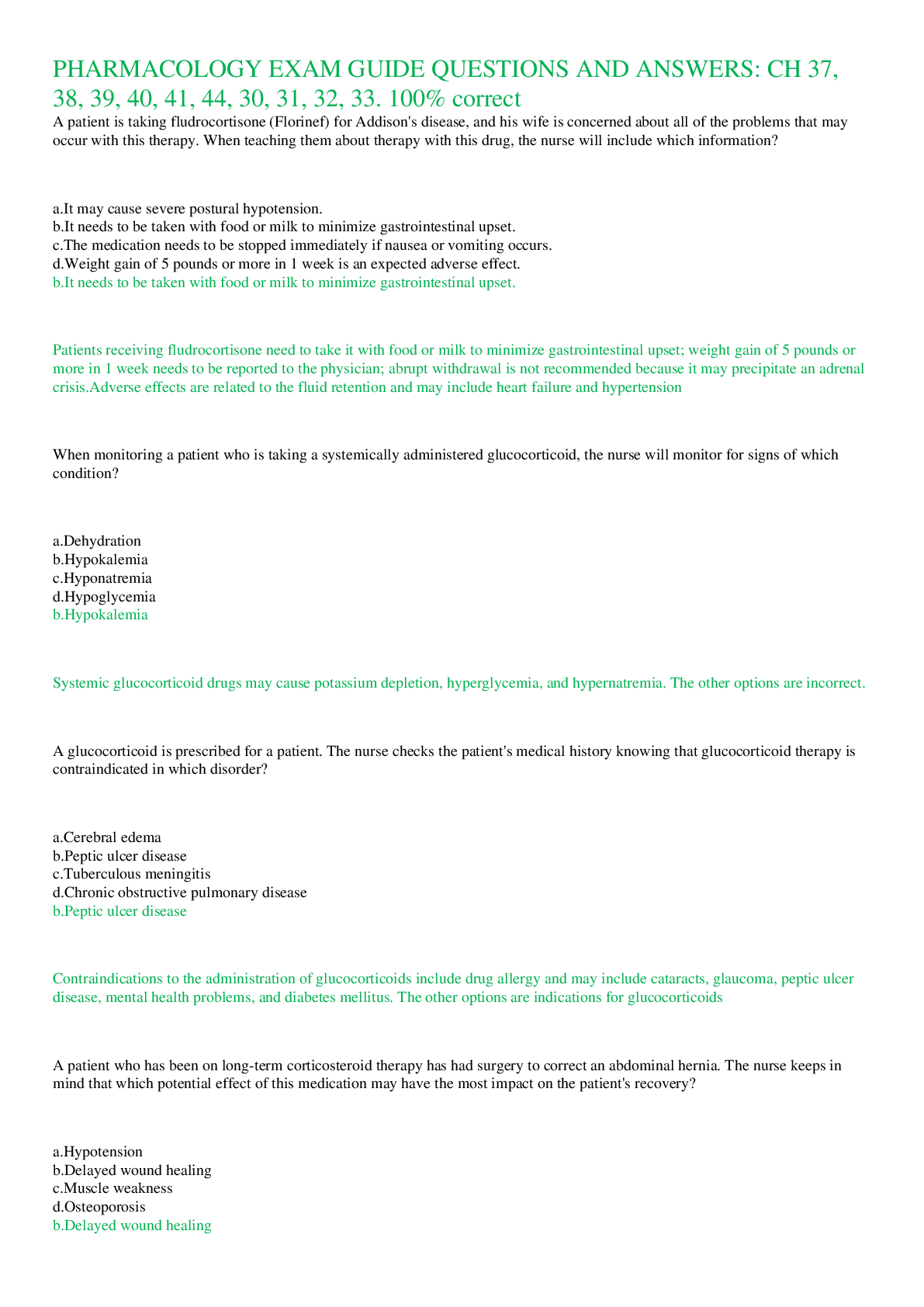Health Care > EXAM > The Health Care Delivery System Exam Guide Questions with Answers; Latest (All)
The Health Care Delivery System Exam Guide Questions with Answers; Latest
Document Content and Description Below
The Health Care Delivery System Exam Guide Questions with Answers; Latest The Health Care Delivery System The health care delivery system definition and basic components The health care deliver... y system consists of a network of agencies, facilities, and health care providers involved in the health promotion, prevention, care, and maintenance of the population served. the health care delivery system environment includes 1. The patient 2. The patient's family 3. The community in which the system operates 4. Technology 5. Governmental and regulatory agencies 6. The medical care professionals 7. Third - party agencies (e.g., insurance companies) LPN and his/her role in the health care team 1. Practices under the supervision of the RN, the physician, osteopathic physician or dentist. 2. Working together (team), they are the direct patient caregivers in most institutions 3. The activity of the LPN/LVN is based on the scope of practice outline in a given state's Nurse Practice Act. 4. Nursing recognizes the benefit of having this bedside caregiver on the Health Care Team. Wellness-Illness Continuum Is the range of a person's total health. One's position on the continuum is ever changing and is influenced by the individual's physical condition, mental condition, and social well-being. wellness the highest level of optimal health and illness the lowest level. Wellness Definition a dynamic state of health in which an individual progresses toward a higher level of functioning, achieving an optimal balance between internal and external environment. factors that impact the level of wellness include age, gender, family relationships, emotional stressors, ethnic and cultural influences, and economic status. illness definition represent a diminished or impaired state of health holistic health care a system of comprehensive or total patient care that considers the physical, emotional, social, economic, and spiritual needs of a person. environmental factors affecting health and illness. 1. social factors: financial hardships, lifestyle, social pressures, societal issues such as AIDS, abortion, or drug abuse. 2. physical factors: stress, conflict, smoking, obesity, alcoholism or drug abuse. environmental factors that can affect health and illness 1. Factors that affect and individuals mental state: fear of illness and dehumanizations, loss of identity, and loss of control can affect ones mental state 2. factors that affect an individual physical condition: imbalance in body function can affect a person's physical condition(illness, AIDS, cancer) Maslow's hierarchy of needs and its relationship to health and illness five levels of essential human needs. A person has to meet needs at the base of the pyramid before advancing to the needs higher on the pyramid. 1. physiologic 2. safety and security 3. love and belonging 4. esteem 5. self-actualization 1. physiologic nutrition, elimination, oxygenation, sexuality 2. safety and security stability, protection, security, freedom from fear and anxiety 3. love and belonging affection, acceptance, by peers and community 4. esteem self-respect, self-confidence, feeling of self-worth 5. self-actualization full use of individual talents health promotion 1. the general consensus in the U.S is that everyone has a right to healthcare regardless of economic status. 2. prevention and education have become important as the population ages. 3. the acute awareness of preventive medicine has resulted in today's emphasis on education about issues such as smoking, heart disease, drug and alcohol abuse, weight control, and mental health and wellness promotion activities. prevention levels (health promotion) 1. Primary Prevention 2. Secondary prevention 3. Tertiary prevention Primary Prevention seek to avoid disease states through wellness activities and preemptive screening programs such as mammograms, colonoscopies, and glucose screening. Secondary prevention recognizes the presence of disease but seeks to reduce the impact of the condition by encouraging behaviors to promote health Tertiary prevention the management of care activities for those with serious health problems who seek to improve the quality of life and reduce further loss of function. Participants in the health care system ( the health care team) 1. physicians, dentists, osteopathic physicians, surgeons, psychiatrists. 2. nurses(RN, LPN/LVN) 3. additional caregivers: social worker, physical therapist, dietitians, respiratory therapist. 4. technologists, medical technicians: laboratory, radiology and other diagnostic personal nurses(RN, LPN/LVN) direct patient caregivers. their duties and tasks vary according to educational background and the state's nurse practice act. social worker trained to counsel patients who have social, emotional, or environmental problems. physical therapists use precise methods of massage, exercise, and hydrotherapy, to help restore physical function of the body. dietitians trained to determined the foods that meet the nutritional requirements of the patient. respiratory therapist assist the patient by administering oxygen, monitoring and maintaining ventilators, drawing blood for blood gas analysis, performing pulmonary function test. unlicensed assistive personnel (UAP) educated in basic nursing techniques and performs under the supervision of the RN rights of health care providers health care workers expect that patients will actively participate in their care as much as possible, by taking an active role in the planning process, by having an understanding of the care and the treatment given, by asking questions, by following the treatment plan prescribed, by acting responsibly with respect to their own conditions, and by giving health care workers the same respect to which patients are entitled. patient's bill of rights 1. established by the American hospital association (AHA)replaced in 2003 when the AHA adopted the patient care patient care partnership. under the terms of this document, patients are assure: -high quality hospital care -a clean and safe environment -involvement in their care and the decision making process -protection of privacy -help when leaving the hospitals and with billing concerns Economic factors affecting health and illness 1. Rising health care costs 2. Aging population 3. Advances in technology 4. Health care insurance 5 Malpractice insurance Rising health care costs health care cost have reached a critical height. several factors playing a role in the increase in cost includes - aging population, - increased use of advance technologies - rising cost of private health care insurance - rising cost of medical malpractice insurance -struggling economy aging population as the baby boom generation nears the age of retirement, their health problems increase, this onset of chronic diseases in a large segment of the population strains the health care system. As the US population ages an increasing number of older adults needs nursing home care which is costly. advances in technology research and the development of technology cost millions of dollars a price that is passed on to the patient in the cost of the individual, tests or treatment. health care insurance it made health care more affordable but it also raised the demand for it. as more individuals sought care the price of health care services and insurance costs spiraled. malpractice insurance as malpractice claims have increased in frequency and amount, the premiums for this insurance have also risen. Changes in the health care delivery system -case management -cross training -Health maintenance organizations (HMO's) -diagnostic related groups (DRG's) health maintenance organizations (HMO) health maintenance organizations or group health care practices provide health care to members for a fixed prepaid rate. the service includes medical care, nursing care, diagnostic test, hospitalization, and various inpatient and outpatient services . has provided low cost health care. emphasis on prevention. diagnostic related groups this is a system that classifies patients by age, diagnosis, and surgical procedure, producing 300 different categories used in predicting the use of hospital resources, including length of stay. many private insurance companies now use similar illness categories when setting hospital payment rates. (used initially by medicare and medicaid) case management involves care of groups of patients by a case manager. the case manager is an RN who coordinates and plans the care of the caseload. AN LPN works works with the RN to meet the needs of the patients in the caseload. case management nursing maps out expectations of the hospitalized patient to reach desired outcomes of care. cross training allows employers to maximize the staff that are available. employees are trained to perform that cross traditional role and responsibilities. Describe the interdisciplinary approach to heath care the primary goal of the health care team is the optimal physical, mental, and social well-being of the patient (holistic care). this goal is achieved by promoting and restoring health within the wellness/illness continuum, and preventing the fragmentation of patient care. -includes developing a comprehensive care plan, effectively communicating and keeping accurate records. nursing care plan . [Show More]
Last updated: 1 year ago
Preview 1 out of 6 pages
Instant download

Buy this document to get the full access instantly
Instant Download Access after purchase
Add to cartInstant download
Reviews( 0 )
Document information
Connected school, study & course
About the document
Uploaded On
Nov 21, 2022
Number of pages
6
Written in
Additional information
This document has been written for:
Uploaded
Nov 21, 2022
Downloads
0
Views
13


